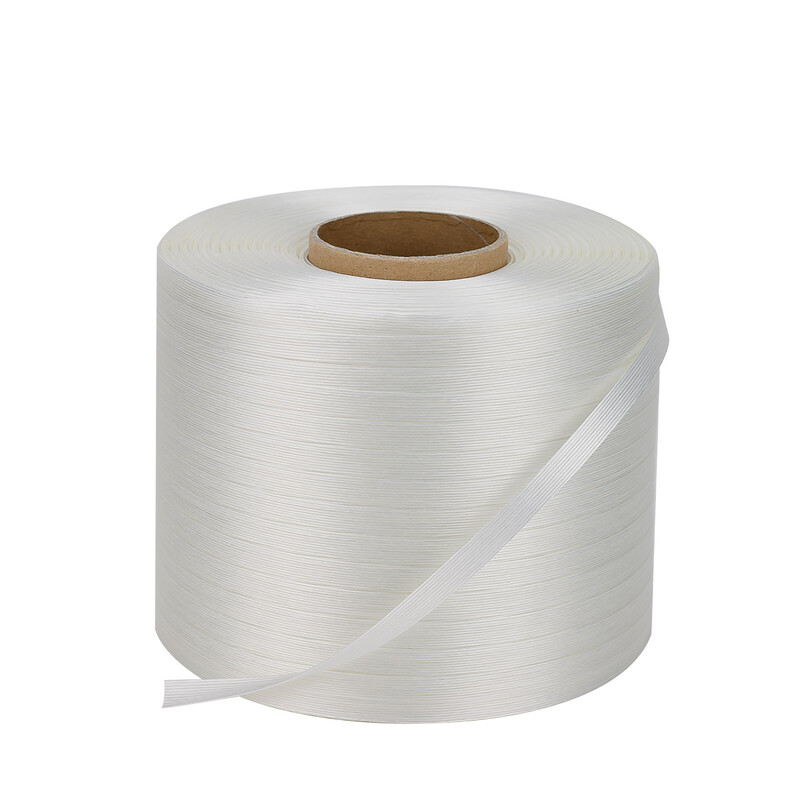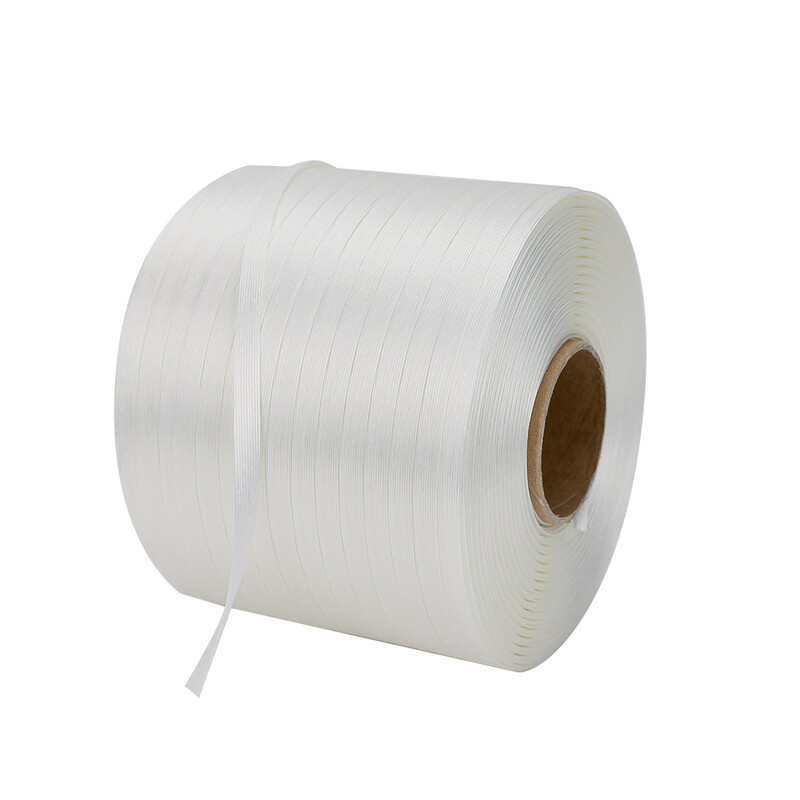In industries where securing heavy, irregular, or large loads is crucial, the choice of strapping material plays a significant role in operational efficiency and safety. Bonded strapping, also known as composite strapping, has emerged as a superior alternative to conventional products like steel straps, metal banding, rope, plastic straps, and stretch film. Its unique combination of strength, flexibility, and ease of use offers numerous advantages, making it a game-changer across various industries, including shipping, logistics, and manufacturing.


What Is Bonded Strapping?
Bonded strapping is made from high-tensile polyester fibers coated with a layer of adhesive or polymer. This construction gives it remarkable strength while maintaining flexibility. Unlike rigid materials like steel or metal banding, bonded strapping can withstand significant tension and absorb shocks during transit without snapping or losing its hold. Additionally, its lightweight nature and resistance to environmental factors like moisture and UV rays make it a durable and reliable choice for securing loads in demanding conditions.
Advantages of Bonded Strapping Over Conventional Methods
Strength and Shock Absorption
Bonded strapping offers exceptional tensile strength, comparable to that of steel straps. However, unlike steel, it has a slight elasticity that allows it to absorb shocks during handling or transportation. This makes it ideal for securing heavy or delicate loads, as it prevents damage caused by sudden movements or impacts.Safety and Ease of Handling
One of the major drawbacks of using steel straps or metal banding is the risk of injury due to sharp edges. Bonded strapping eliminates this risk entirely. Its smooth, flexible surface is safe to handle, reducing the likelihood of cuts or punctures. Moreover, it can be applied manually without requiring specialized tools, simplifying the strapping process and saving time.Versatility
Bonded strapping is highly versatile and can be used across a wide range of applications. From securing heavy machinery to bundling fragile items, it adapts to various load sizes and shapes. Additionally, its ability to maintain tension under fluctuating temperatures and humidity levels ensures that loads remain secure even in extreme conditions.Cost-Effectiveness
Compared to steel straps, bonded strapping is a more economical solution. Its lightweight nature reduces shipping costs, and its durability minimizes the need for frequent replacements. Additionally, bonded strapping requires fewer tools and less maintenance, further lowering operational expenses.Environmentally Friendly
With growing emphasis on sustainability, many industries are turning to eco-friendly alternatives. Bonded strapping can be made from recyclable materials, making it a greener option compared to non-recyclable plastic straps or stretch film. This not only helps businesses reduce their carbon footprint but also aligns them with modern environmental standards.
Key Applications of Bonded Strapping
Shipping and Logistics
In the shipping and logistics sector, securing cargo during transportation is critical to prevent damage or loss. Bonded strapping provides the necessary strength and flexibility to hold loads firmly in place, whether on trucks, ships, or trains. Its shock-absorbing properties protect goods from the vibrations and impacts that are common during transit.Manufacturing and Warehousing
Bonded strapping is frequently used in manufacturing and warehousing to bundle and secure products for storage or distribution. Its lightweight and easy-to-handle nature make it a preferred choice for packaging operations, while its high tensile strength ensures that even heavy industrial equipment can be securely fastened.Construction and Timber Industries
In the construction and timber industries, where materials like steel beams, pipes, or wooden planks need to be transported and stored safely, bonded strapping proves invaluable. Its ability to hold heavy, irregularly shaped loads securely ensures that materials remain intact and organized, improving safety and efficiency on-site.Agriculture and Recycling
Farmers and recycling centers also benefit from bonded strapping. It is used to tie bales of hay, straw, or compacted recyclable materials. Its moisture resistance and durability make it suitable for outdoor use, ensuring that loads remain securely bundled regardless of weather conditions.
Why Businesses Are Switching to Bonded Strapping
The increasing adoption of bonded strapping across industries highlights its growing recognition as a superior securing solution. Businesses are choosing it not only for its practical advantages but also for its long-term cost savings and reduced environmental impact. Moreover, its ability to streamline operations and enhance safety makes it a preferred choice for companies looking to improve productivity and protect their workforce.

Conclusion
Bonded strapping has redefined the standards for load securing. Its numerous advantages over conventional products, such as steel straps, metal banding, rope, plastic straps, and stretch film, make it an indispensable tool for modern industries. With its unmatched strength, safety, and versatility, bonded strapping is set to remain a staple in shipping, logistics, manufacturing, and beyond. For businesses seeking a reliable, cost-effective, and eco-friendly solution, bonded strapping is the clear choice.



